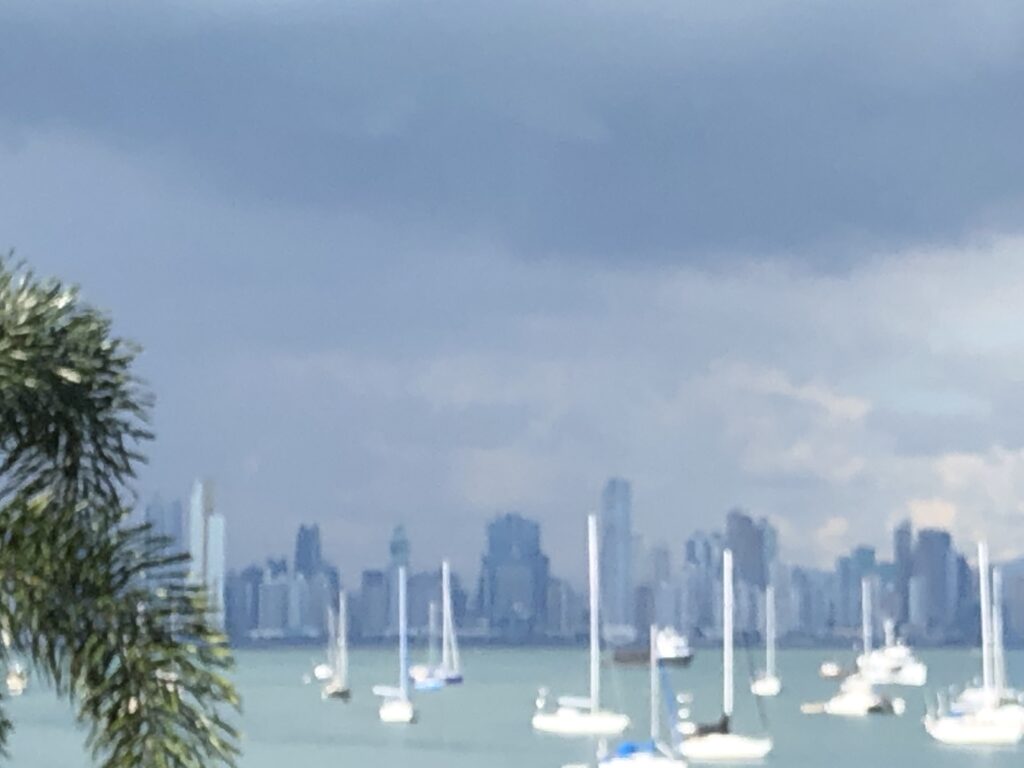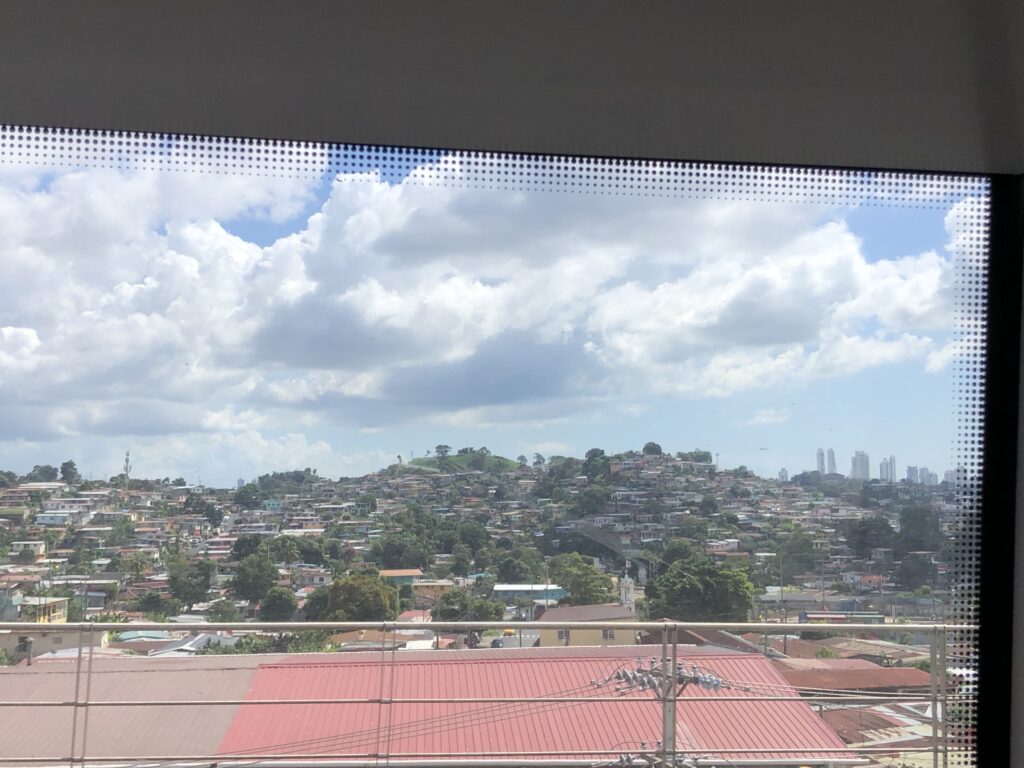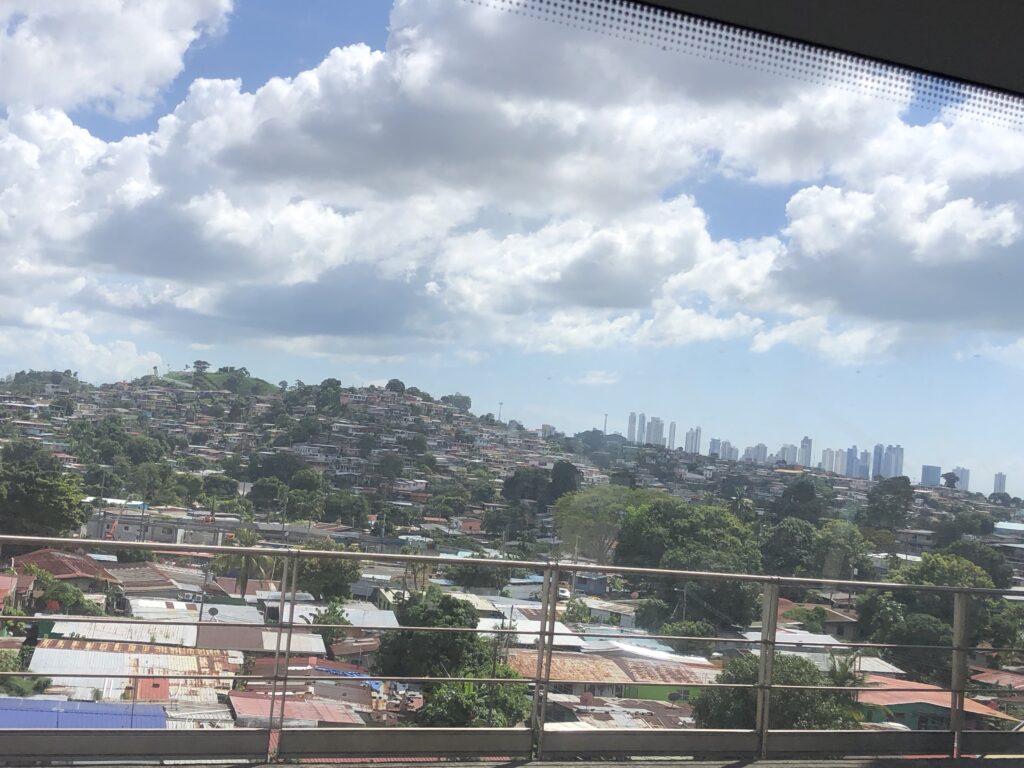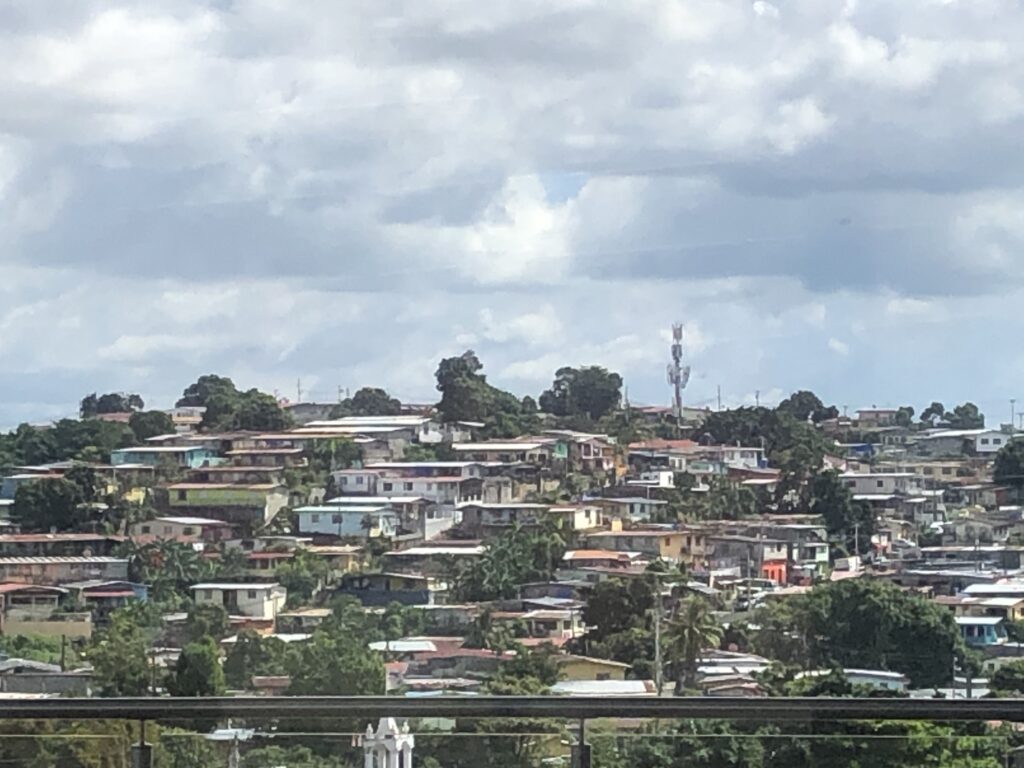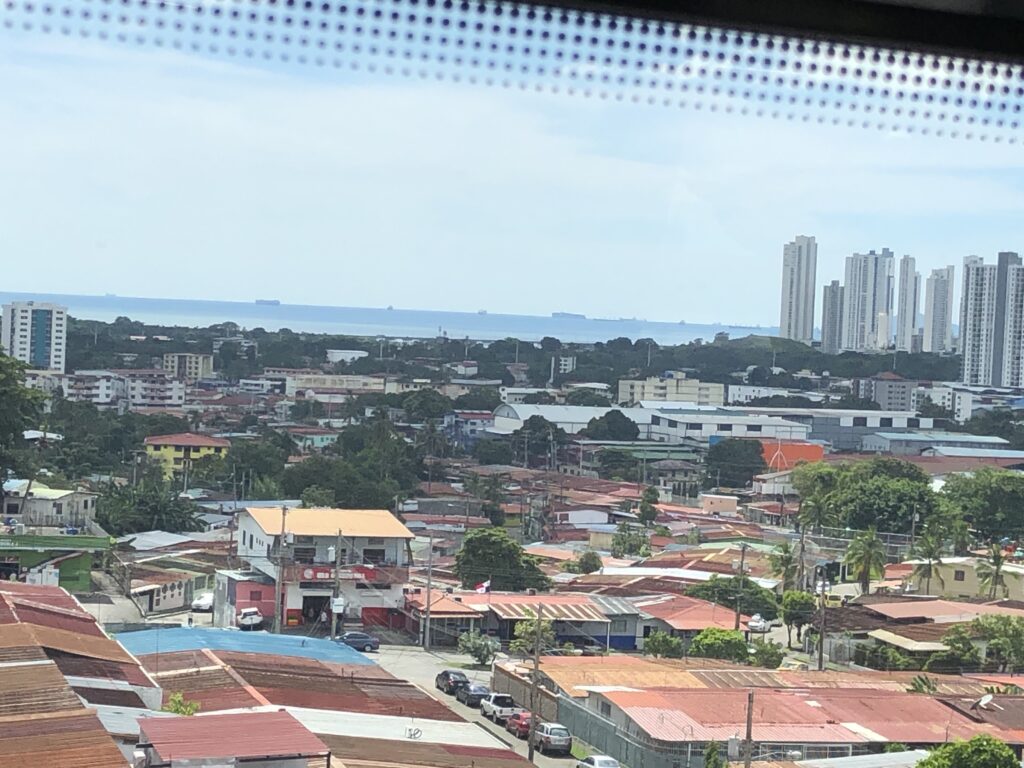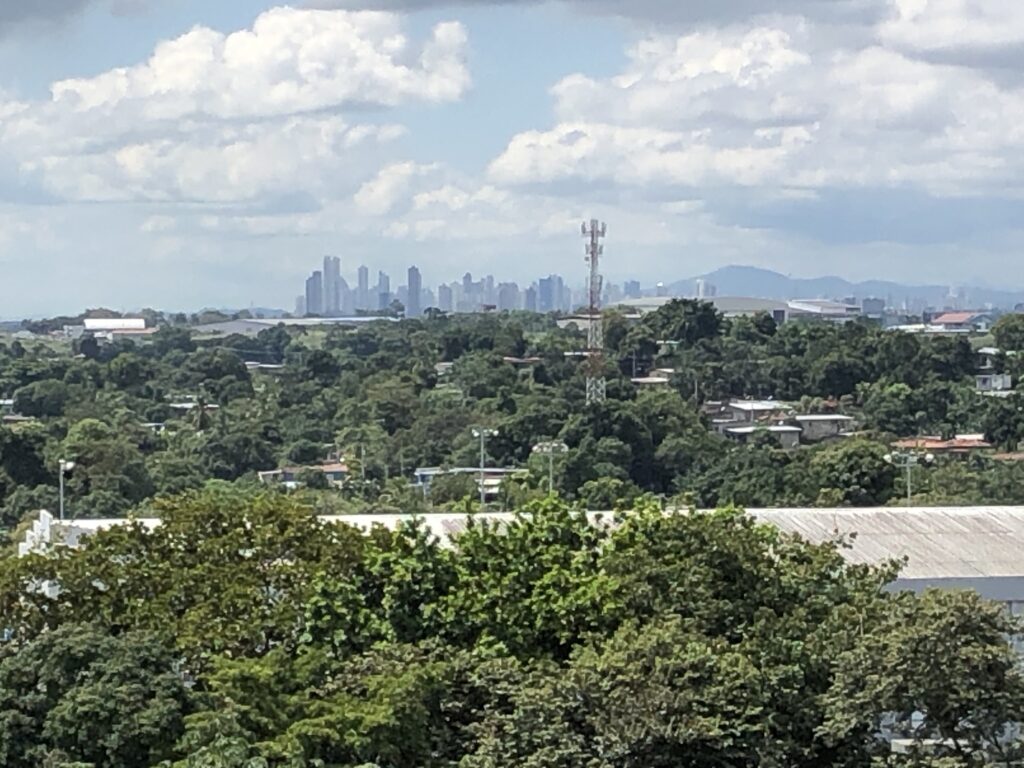One of our goals for this excursion to Panama is exploring the big city and getting a taste of urban living, since both of us have spent our entire lives in small towns and suburbs. With a place the size of Panama City—over 2 million residents—that takes a lot of exploring.
Earlier this week, we did tourist exploring: the hop on/hop off city sight-seeing buses. We enjoyed it and learned a great deal—and spent a pretty good chunk of money (total $70) doing that. Today, for $2.10 total (it would have been only 70 cents each if we hadn’t gotten off at one of the stops to visit a shopping center and to get a pastry), we spent a couple of hours on the Metro and had an entirely different experience.
The Panama City Metro is new, clean, beautiful, and efficient. It’s one of those big pieces of infrastructure that is being funded by income from the Panama Canal. About a third of Linea 1 (north/south) is underground, but the rest, including all of Linea 2 (east/west) is above ground. It gave us amazing views of the city. Here is some of what we have learned in our explorations.
Shopping: American consumerism is alive and well in Panama. Beauty shops, electronics stores, and shoe shops dominate this urban landscape. Whether you’re in a high-end area or a slum, you’d think that’s just about all anyone in Panama spends money on, based on the saturation of these types of establishments. Most of the shopping areas we have visited, from the sprawling Albrook Mall to the Megolpolis Outlets by the Hard Rock Hotel to the Los Andes Mall in the suburbs, have been packed. The one place that hasn’t been crowded was the exclusive SoHo Mall. With its Louis Vuitton, Chanel, and other expensive shops, it’s probably not catering to most Panamanians—nor to we expats on a budget!

Ubiquitous electronics 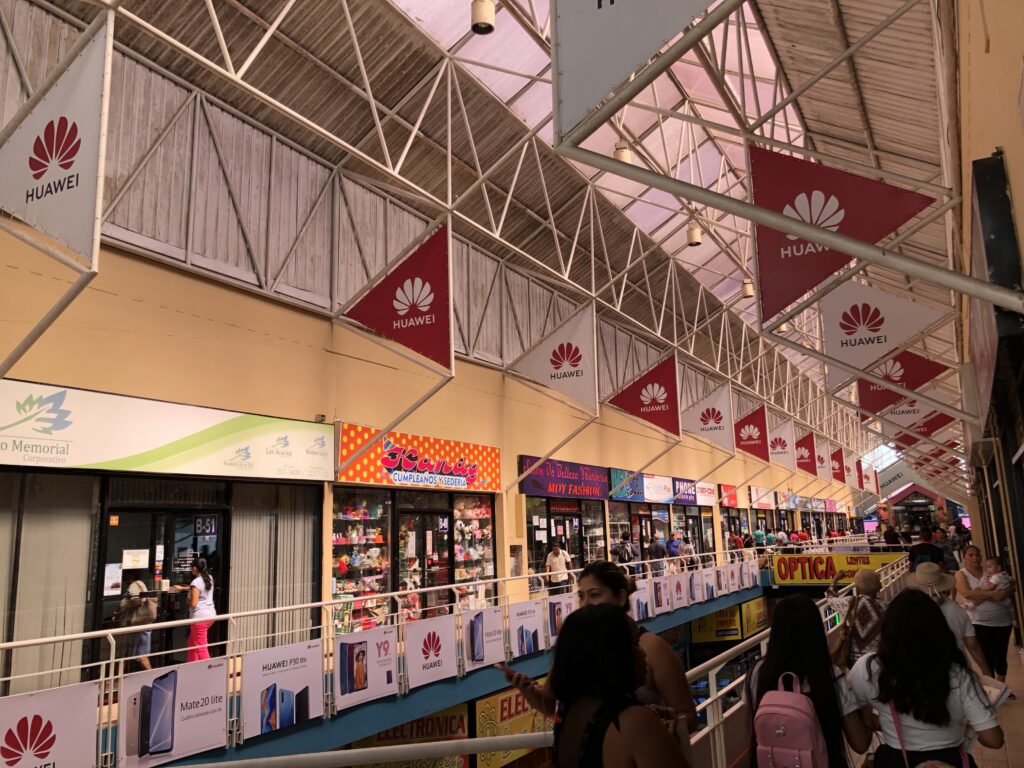
Las Andes Mall 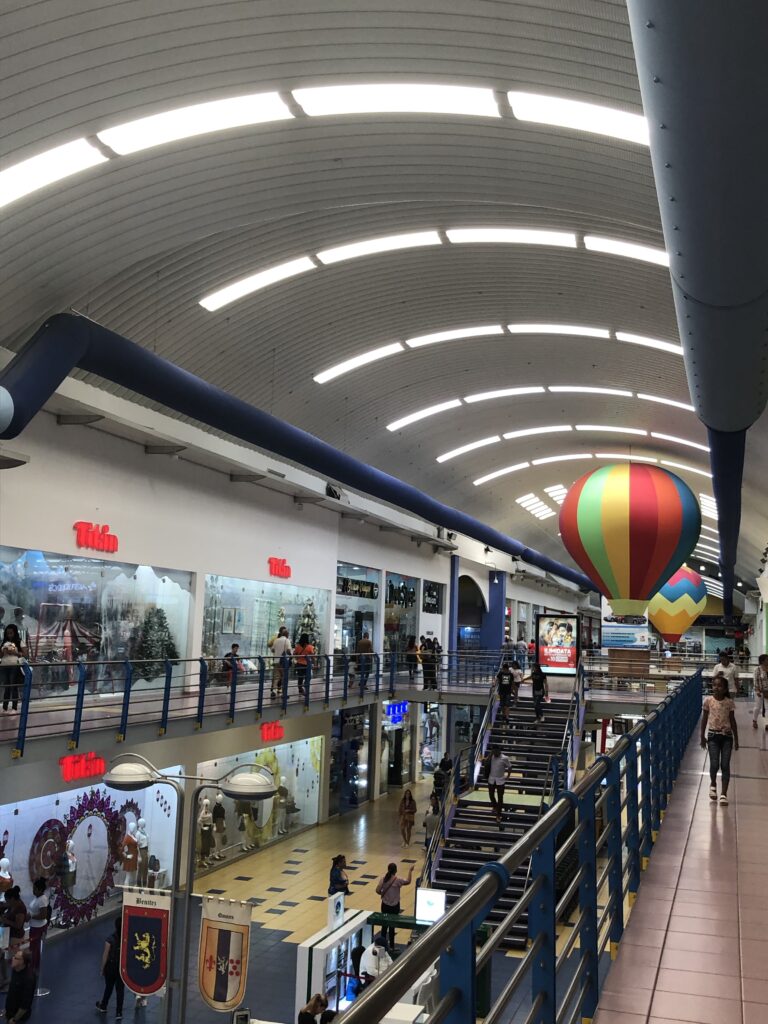
Albrook Mall
Housing: Gleaming white high-rise apartments on the seafront dominate photos you see of Panama City. That’s because they dominate the city. Our excursion on the Metro, though, took us to many other neighborhoods. We saw slums with crammed-together, one-story concrete block buildings, rusty metal roofs, and no yards. We saw middle-class neighborhoods, with red-tile roofed homes and lots of flowering trees. Interestingly, the city sightseeing tour also passes (and even stops at, though no one got off) one of the poorest neighborhoods in the city. You can’t get to the historic Casco Viejo (subject of a future blog) or the Amador Causeway, site of the Biomuseo and the marina for canal transits, without passing by Barrio del Chorillo. The guides explain that it has “many social problems,” but is also the home of light-weight boxing champion Roberto Duran, a Panamanian hero. A few years ago, we had a gringo friend who was told by a police officer that he couldn’t walk into Chorillo. So, like any city, you’re going to find just about everything here when it comes to housing. (We have not seen any trailer parks, though.)
Transportation: In addition to the new Metro, Panama City has a fairly new bus system. The buses are clean and air conditioned, and we’re slowly figuring out how to use them. At twenty-five cents a trip, we can’t afford not to!
The old bus system, the Red Devils, which were a bit infamous back in the day, are slowly phasing out, but you can still see—and hear—them on the busy main streets.
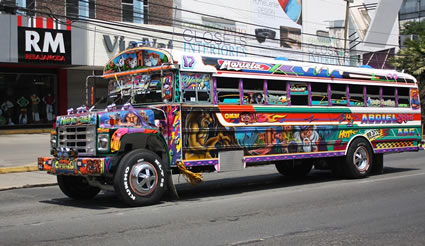
Red Devil buses are getting rare 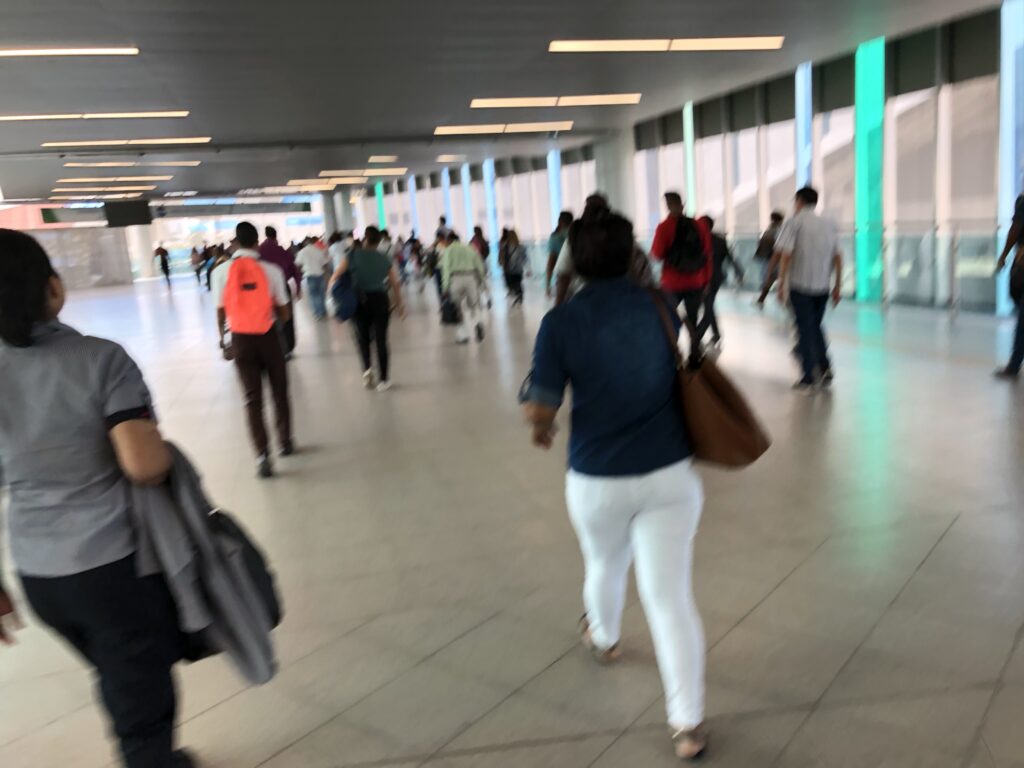
Muchas personas en el metro
Taxis are everywhere. It seems at least a third of the vehicles driving around town are bright yellow. They are inexpensive, but some cabbies will try to take advantage of foreigners (and Bob and I really, really look like foreigners). Cab drivers in Panama are not tipped.
Uber is inexpensive ($4 vs. about $18 for the same length trip in the U.S.), and we’ve learned that you can find Uber drivers who will take dogs, too. Many expats without cars find it the best way to get around.
Trying to drive in this city is absolutely insane. We did it the first time we visited, and I swore we’d never do it again. (Bob may buck that directive in a month or two. We’ll see.) Cars, buses, taxies, small and massive trucks, school buses, and crazy drivers with loud horns all crowd the roadways, turn across multiple lanes of oncoming traffic, run red lights, don’t obey stop signs, and definitely don’t yield to pedestrians. It’s chaos out there.
And finally walking. We love to walk. With the exception of the incredibly wonderful path on Cinta Costera (“Costal Ribbon” is the seafront walkway), walking in Panama City is not for the faint of heart, the clumsy of foot, or those who walk with their heads in the clouds. Sidewalks are often broken. Curbs are uneven. Big holes, some intentional for perhaps things like utilities, and many unintentional, abound. Cars do not yield to pedestrians trying to get across busy streets—even at the signaled crosswalks! Tree roots cause cracks and unevenness. If you can think of something that can go wrong with a sidewalk, it will here, and that can all happen within just one block! Still, we manage to get out and about and do love walking around the city.
City Services: My least favorite thing about Panama City when we first visited five years ago was the tremendous amount of trash everywhere. It’s not like that now. Yes, there’s still lots of trash, but it’s not as bad, and the city is encouraging recycling. We’ve spoken with local folks who agree the trash problem is improving, and they credit people taking pride in the community to the positive change.
Water is good, and electrical and gas service work routinely. You often hear about intermittent utilities in non-first-world countries, but Panama City doesn’t seem to have that problem as much as other places we’ve heard of.
Panama City is full of beautiful parks, and the work crews are tremendous. Raking leaves from the trees and trimming all of the beautiful flowers is constant. The guys (they are all guys) are out early in the mornings to beat the heat of the day, and they work hard to keep the green spaces around the city looking beautiful. We have seen no lawn mowers in Panama. All grass trimming is done with gas-powered string trimmers. Labor here is inexpensive!
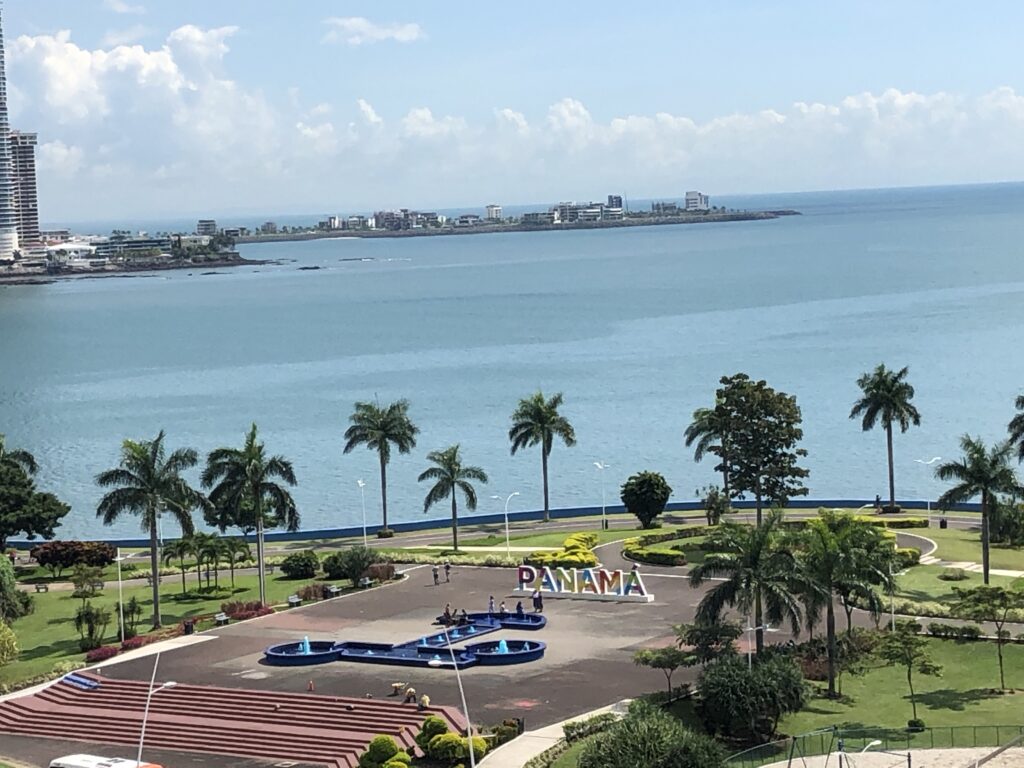
Banking: Panama City is one of the banking capitals of the world. Our neighborhood is filled with all the big banking skyscrapers, but there seems to be an ATM on almost every corner throughout the city. Everything dispenses U.S. dollars.
Restaurants: Fried chicken is everywhere, as is traditional Panamanian food, Peruvian food, Korean and Chinese food, steak houses, Italian and Argentinian restaurants, sports bars, pizza parlors, bakeries, coffee shops—it’s really all you’d expect in a big metropolitan area. A few blocks from us is the seafood market, where the fish goes from boat to kitchen to table all within about 20 feet. And the prices throughout the city range from $3 for a great lunch in a mom-and-pop place to as much as you want to spend at the Hilton.
Old American Military Bases: For more than 80 years, the United States had a military presence in Panama, most of it concentrated in the Canal Zone. In most cases, the Panamanians are repurposing those bases well. Albrook, site of a former airbase, has a small airport and the huge shopping mall in old airplane hangers. Clayton is a beautiful housing area where some of the former officers’ homes can go for upwards of $1 million (out of our price range!). In the Canal Zone, old barracks have been turned into offices for the Panamanian Canal Authority. And our very favorite is the City of Knowledge, former barracks and other base infrastructure that have been taken over by a consortium of tech companies and universities. It’s a beautiful area, and we are hopeful that cutting-edge research and technology will be forthcoming.
Not all of the old bases are being used, however. One of the saddest sites in town—and the sightseeing bus went right by it without the guides saying a word—is an old base near the Amador Causeway that is being reclaimed by the jungle. Much is being lost.
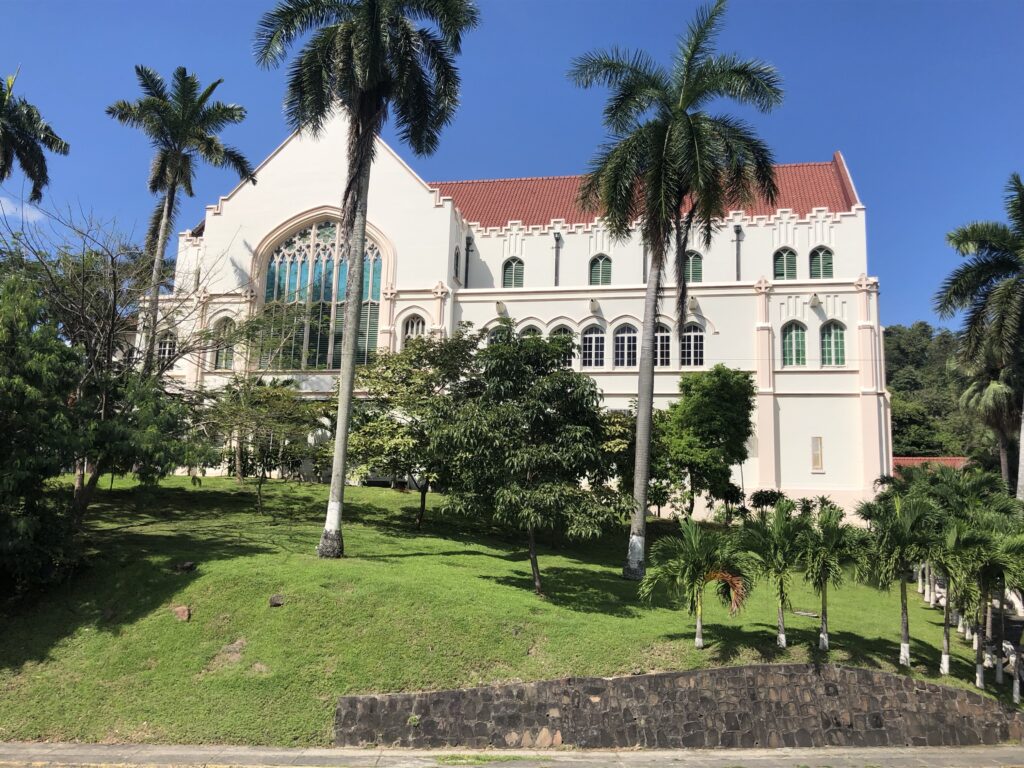
Nice homes 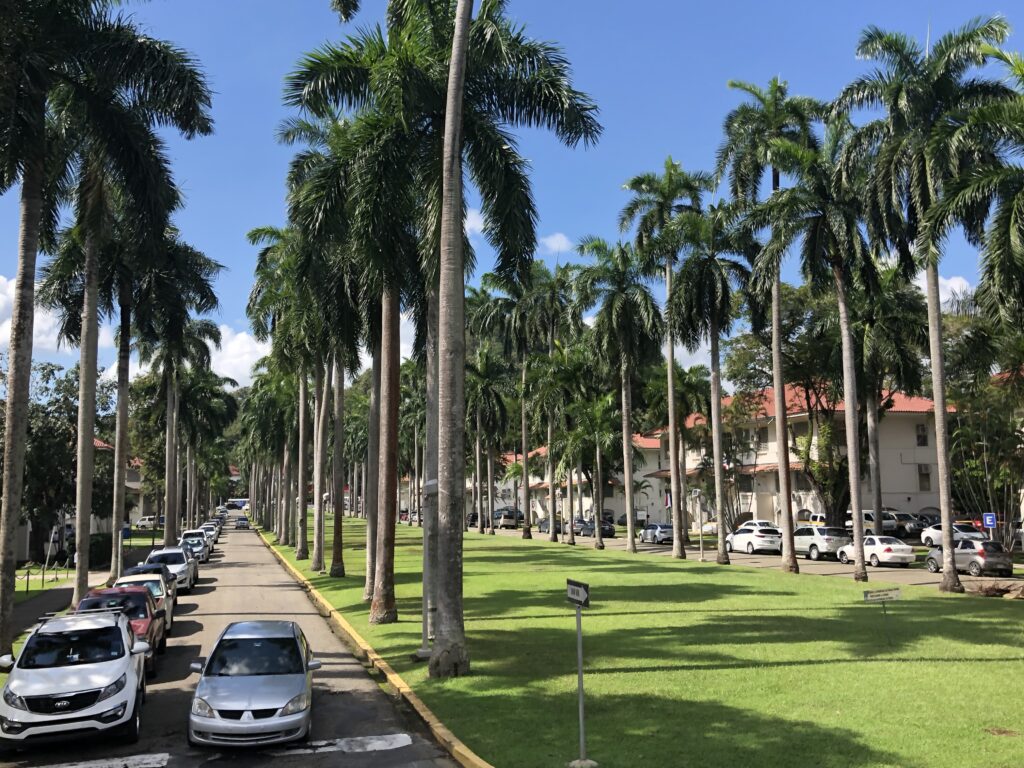
American infrastructure 
Former U.S. base 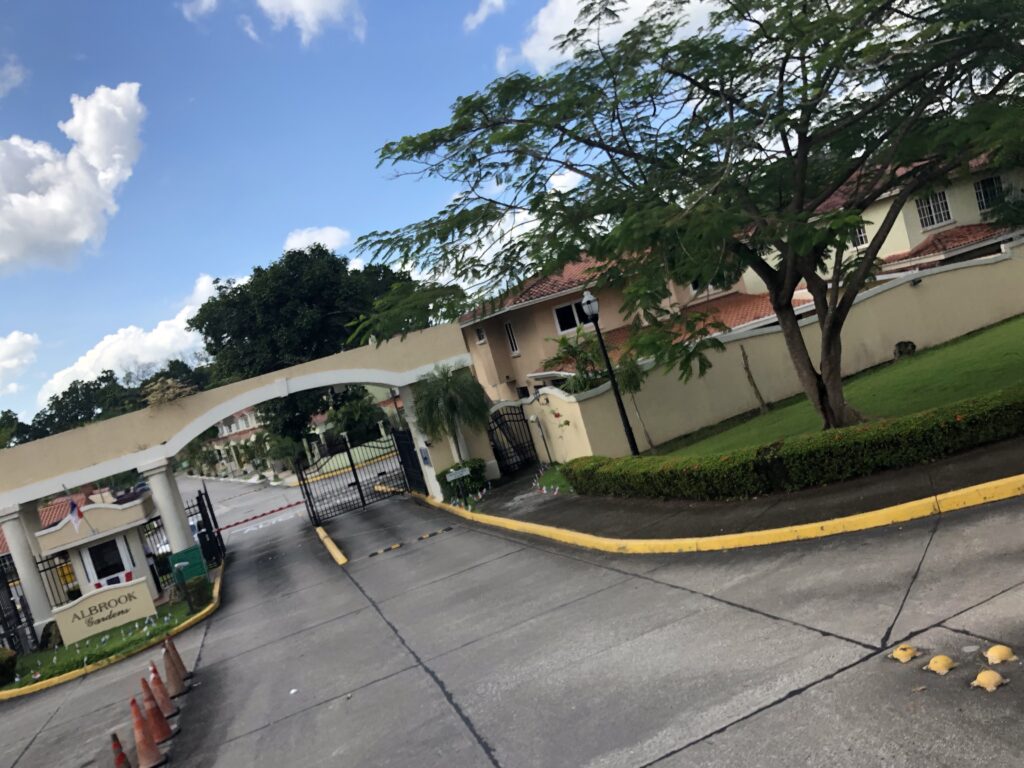
“Gated” neighborhood 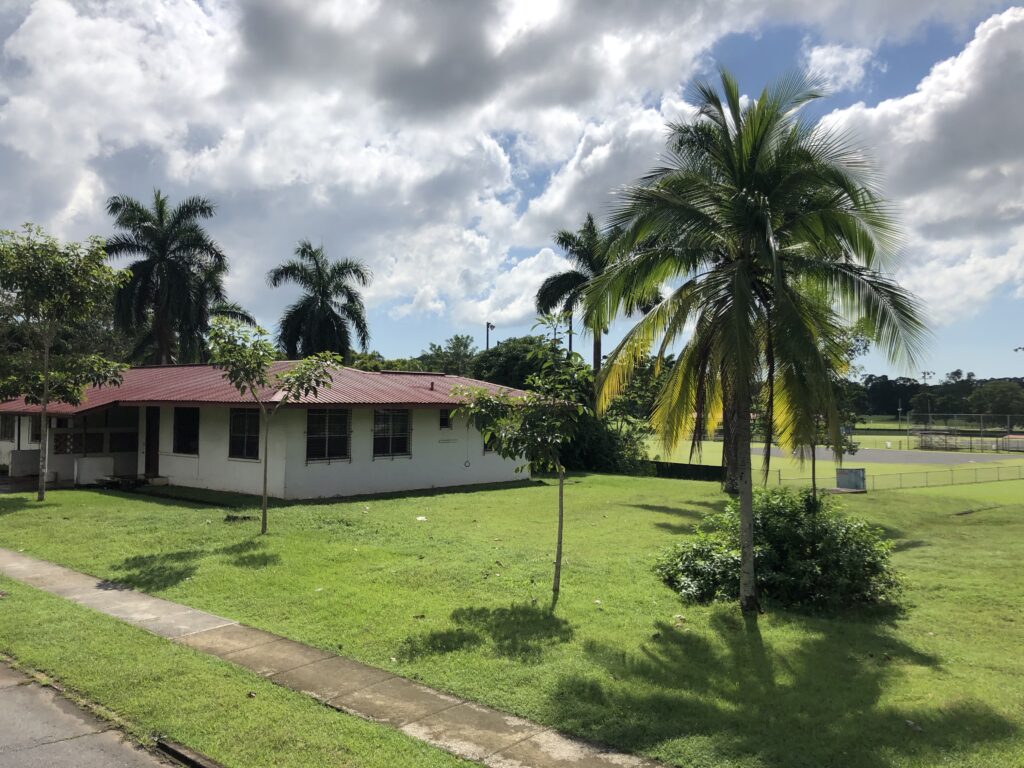
Another nice house 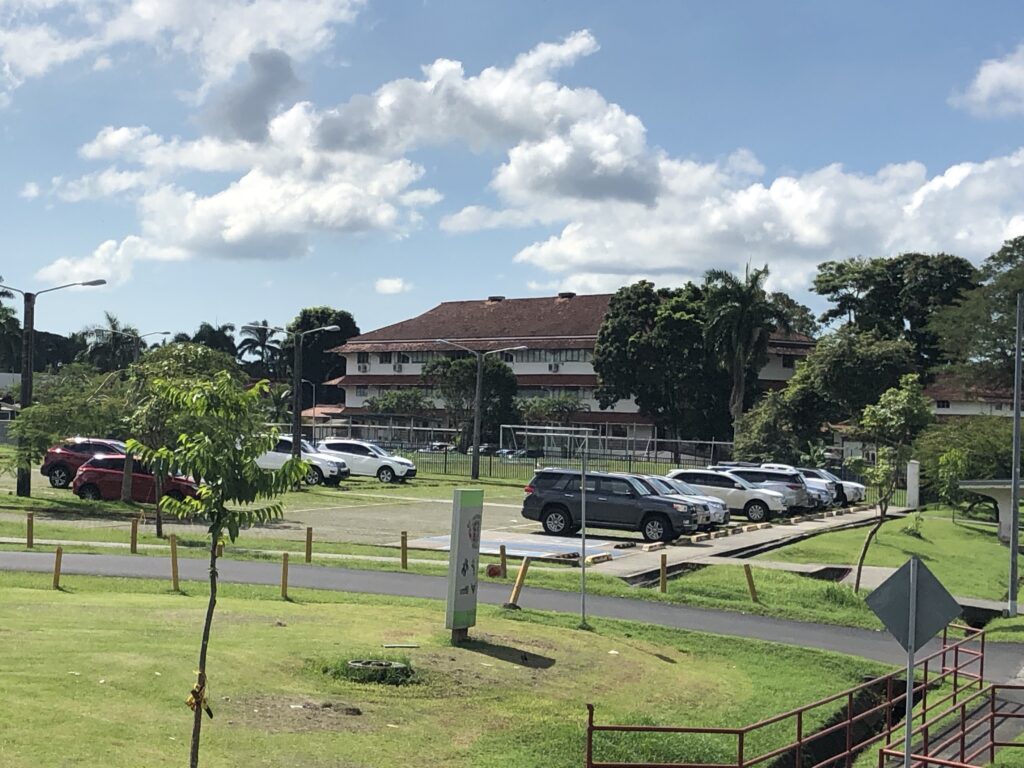
City of Knowledge 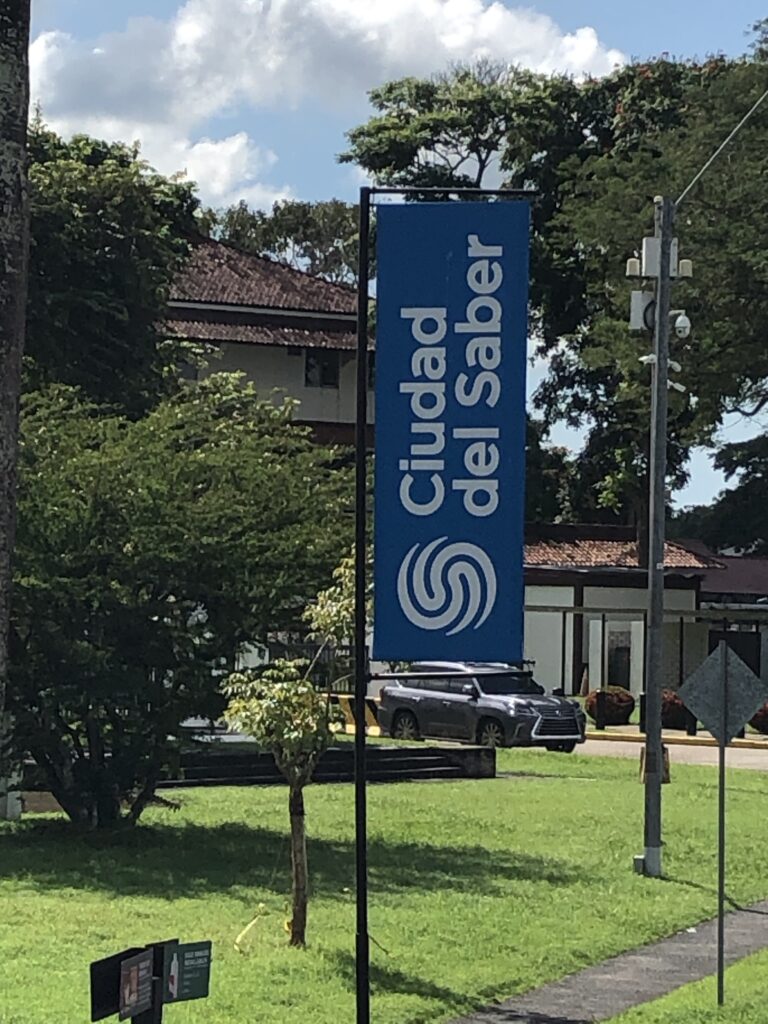
City of Knowledge 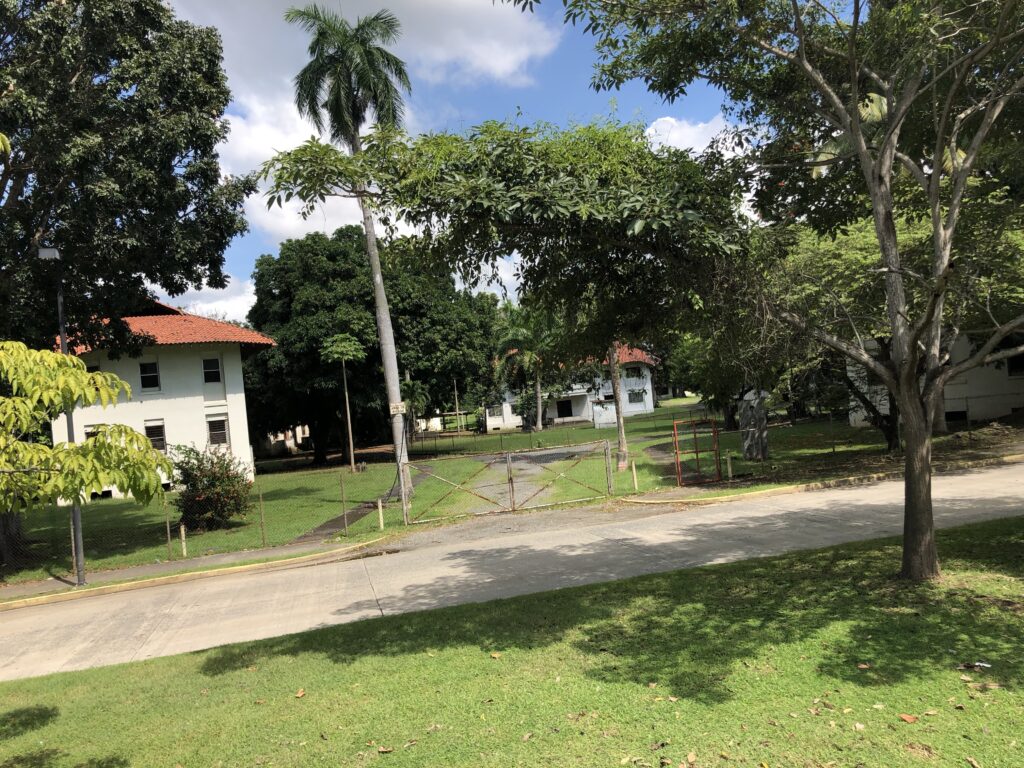
This looks better in the photo than it does in real life: former U.S. base being absorbed by the jungle
Meeting Nice People: From the nice woman who showed us we needed to put bills in upside down to recharge our Metro cards to the gentle but firm woman who told us we should not drink from our soda bottle on the Metro platform, we have met some nice and helpful people in our explorations. Our very favorite was an older gentleman we met today from the indigenous Kuna region of Panama. I was wearing a New Mexico National History Day t-shirt, and he said, in very good English, that he had visited our “country” of New Mexico, with his companion, a woman dressed in traditional Kuna clothing and jewelry. They had been at a gathering of indigenous peoples with the Apaches in New Mexico. He enjoyed the visit very much but said he preferred living in Panama.
For now, we do, too.
